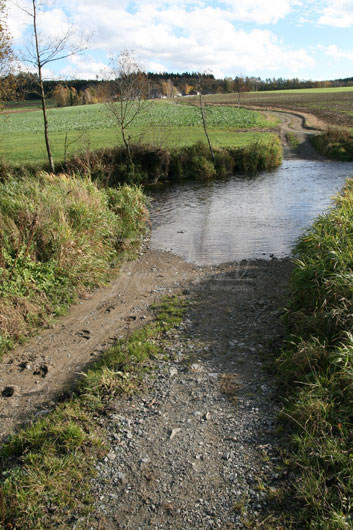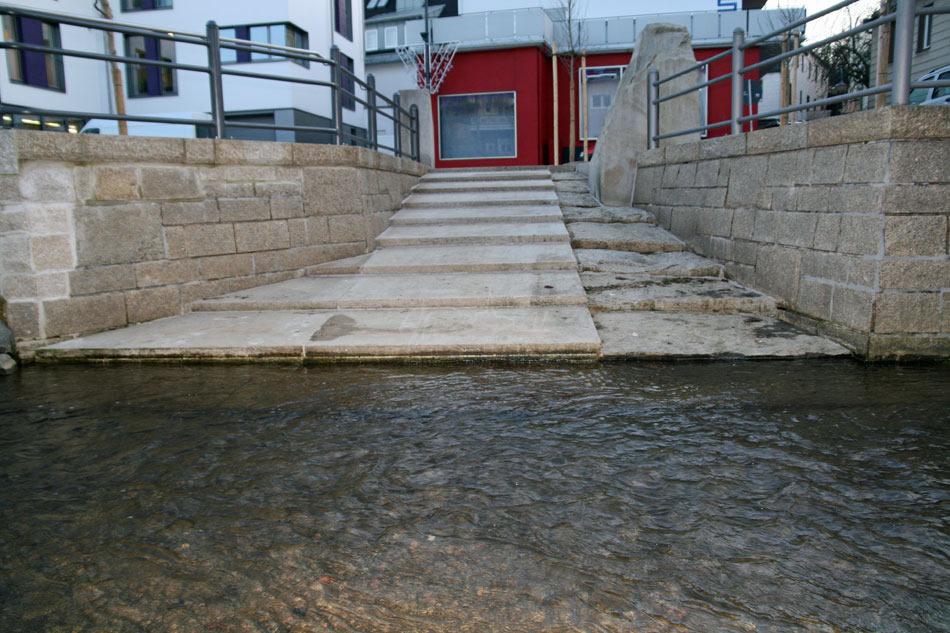 With fords, places are designated at which streams can be crossed by vehicle or on foot. These were frequently constructed, especially during the middle ages, on trade routes in order to be able to charge customs.
With fords, places are designated at which streams can be crossed by vehicle or on foot. These were frequently constructed, especially during the middle ages, on trade routes in order to be able to charge customs.
The opening of the Münchberg area came from the west through Frankish settlers between 1000 and 1250. In this period the Pulschnitz at the ford formed the germ cell of the town of Münchberg: houses in the form of a “hoof” (court/yard). Characteristic of the forest habitat settlements are long narrow ground floor stripes, which were known as "Zelche".
The water that was vital for the early settlements was easily accessible in the valley. From here the natural raw materials of the river and the richly forested area could be utilized. For this reason the first settlements consisted of only a few farmsteads, most of them used only by hunters or fishers. These were able to deal with traders who were passing through. The Münchberg ford spot was strategically favorable and was an important transportation bridge between the Main and Jura regions and the main settler area around Hof, Plauen, and Eger (old streets).
The early settlers on the Pulschnitz ford offered their services as favorable rest places for foot travelers or wagon trains between Bindlach and Hof, or Kulmbach and Hof. So several important street connections crossed through today’s city center. One of the earliest traffic ways led, for example, in the northern direction to Hof, and was joined to the important trade streets of Nürnberg – Leipzig. Tanneries and black smith shops established themselves on this spot; the upper city grew as a development with farmers’ houses and with at least partly enclosed fortified walls. Around 100 meters to the east is a tower hill for the security of the street crossing. A partial section of the old street over Sparneck to Eger is still preserved today as a sunken road.
The granite slabs that are now laid down to the river Pulschnitz remind one of the previous ford on this spot. Here the settlement of our city probably began. In the picture on the upper right you can see how such a river crossing could have gone.

Video: Aerial view of the Ford
Copywriters, authors, photographers, rights holders or sources:
Rainer Fritsch, Sandy Schroeder, Markus Jennermann, Adrian Roßner, city archives
Audio file

